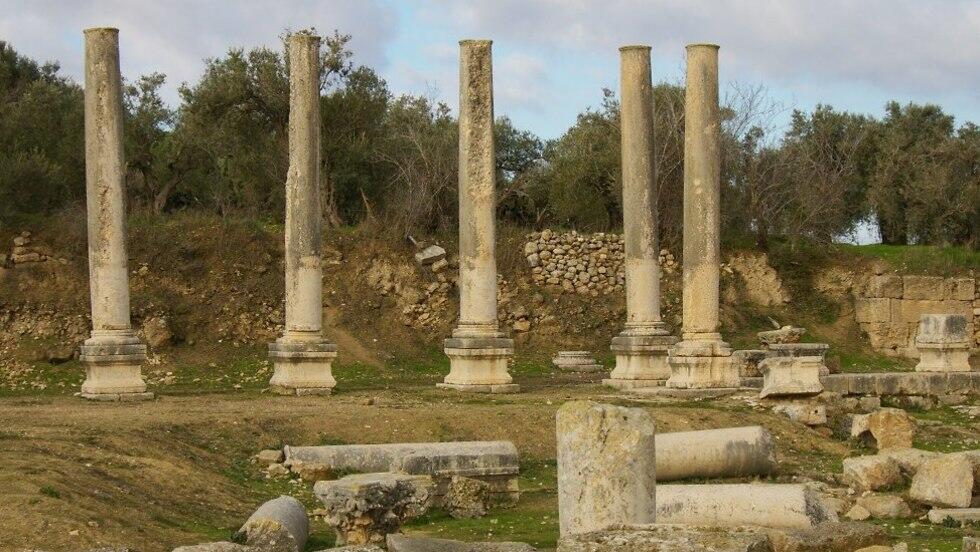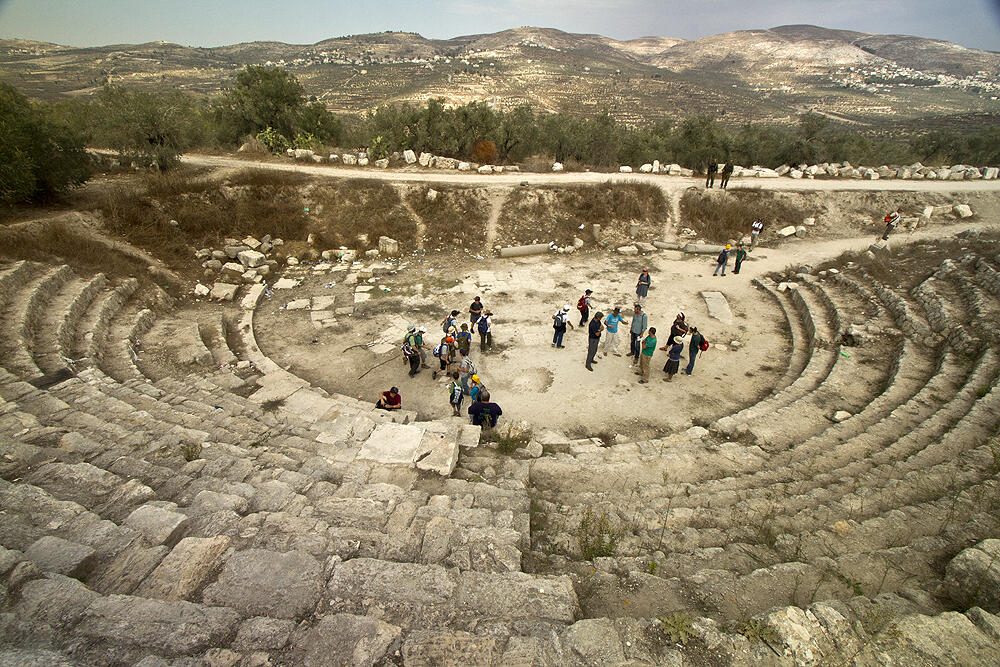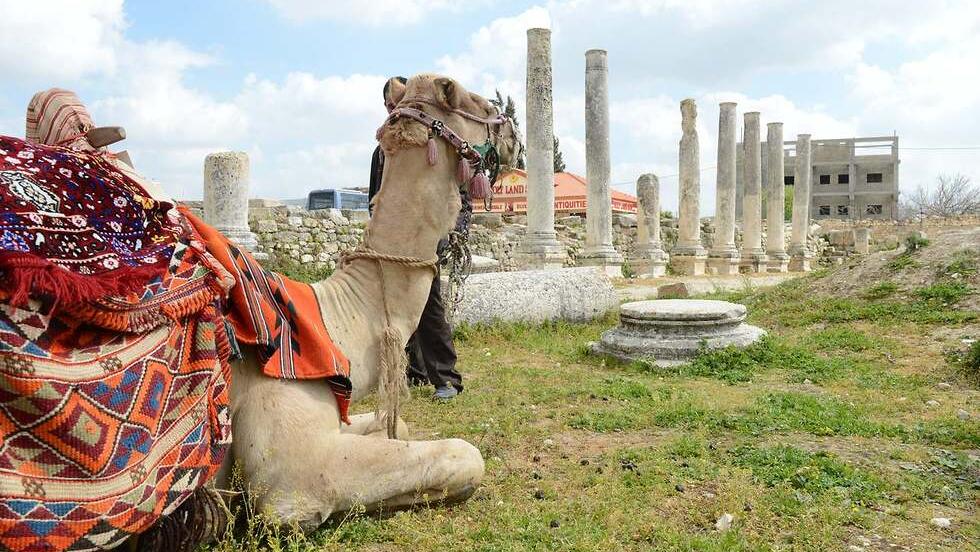As a tour bus with Israeli visitors arrived at the Sebastia archaeological site in the West Bank city of Nablus, Palestinian youth greeted it with stones.
“We were welcomed very nicely, if not for the decoration that they put at the entrance of the site,” said Israeli tour guide Baruch Elitzur, referring to a Palestinian flag. “A tad less connected to whoever was living here in the past.”
Sebastia Deputy Mayor Dr. Nizar Kayed insisted, though, that “no Israeli coming here in his car was attacked or not respected.”
"But when you come with the army to a tourism place, close it, and the army pulls out weapons, then the people throw stones at the army. A tourist place is a peaceful place. No need for armies," Kayed said.
The Israeli visitors came to explore the ancient archeological site of Sebastia – ruins that lie buried under layers that date back to the 9th and 8th centuries, known then as Samaria: The capital of the Kingdom of Israel during the First Jewish Temple Period of King David and King Solomon.
But prior to entering the ancient site, the visitors cross invisible lines of control.
The town lies in Area B, under mixed Palestinian civilian authority and Israeli security jurisdiction. But the archaeological site lies in Area C, under full Israeli control including that of the Israel Nature and Parks Authority.
“We'd prefer that this is Area C too, that there won't be a Palestinian flag,” said Uzi Dayan, a former Israeli army deputy chief of staff.
A coalition made of Palestinian Authority (PA) President Mahmoud Abbas's Fatah party and the Popular Front for the Liberation of Palestine heads the municipality. The off-season, age-old Sebastia site looks like a sleepy little town, although the walls speak volumes, plastered with images of weapon-carrying Palestinians.
A delegation from South Korea recently visited the Palestinian town and met with the mayor and his deputy, as well as with officials of the PA's Tourism and Antiquities Ministry, prompting alarm from Israeli religious media: "South Korea helping restore the archeological site as a Palestinian heritage site," read one headline.
But the South Korean embassy in Israel told i24NEWS that the report was “incorrect.”
“Israel's Foreign Ministry clarified the matter with Korea. The tour of the area was for the purpose of getting to know the tourist site in light of the arrival of Korean tourists there," it said.
Dayan didn’t buy it: "With due respect to the South Korean government, the one who will decide what is happening here is Israel."
For Kayed, it’s all a storm in a teacup.
"This project is to improve tourism in Sebastia. There's no action in the archeological site. Only to encourage tourism. And it's in Area B, which is our responsibility."
He said South Korean efforts to boost tourism could see the building of a museum, walking paths, or even some hostels.
A pamphlet issued by the Palestinian Tourism and Antiquities Ministry makes no mention of the Jewish links to Sebastia. The words "Jewish," "Israel," or "Samaria" are replaced by "early Bronze Age" or "Iron Age II."
“You can go to the history experts and they explain to you,” said Kayed. “There’s no problem with the Jewish religion of the Jewish people. No problem. This our part of our history.”
“I guess that this leaflet is actually trying to be overly politically correct,” Dayan claimed. “So they narrow themselves to talk about archeological periods.”
The pamphlet also doesn’t mention Palestinian roots, nor the prophet Mousa and King Dauod – the Arabic names for Moses and King David.
“They're doing their work," said Dayan. "There is nothing Palestinian there. What we might find – and we do find there – are Israeli coins." And coins there are. A Palestinian farmer displays some dating from the times of the Hasmoneans, Alexander the Great, and the Romans. He sells them for less than $30.
Excavating layers upon layers of civilizations can be destructive. When the bedrock is reached, archaeology ends, and politics enter the fray. Fortifying the Jewish bond between ancient and modern-day Israel is a tool that boosts the Jewish state’s claim to the West Bank.
“We are not foreigners in this place. This was actually our kingdom and our heritage,” Dayan declared.
Kayed pointed to some ancient pillars.
“These are Roman ruins. Does this allow the Italian people to say, 'This is our land'? No. The ruins and history are not tools for dismissing people and ignoring our rights to freedom and to our land."
As Sebastia proves, there’s one thing Israelis and Palestinians can agree on – the battle for sovereignty over Biblical sites is, in a sense, the bedrock of their conflict.




